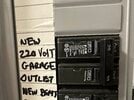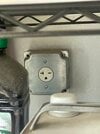Hi, I have a 6-20 outlet in my garage currently. I know it’s not the fastest and I’m okay with that. My question is:
1) can I hardwire using the existing wiring? I believe it’s 12g
Or
2) can I wire the wall connector to a 6-20 plug and just plug into the outlet?
See photos below for reference

 ibb.co
ibb.co

 ibb.co
ibb.co
1) can I hardwire using the existing wiring? I believe it’s 12g
Or
2) can I wire the wall connector to a 6-20 plug and just plug into the outlet?
See photos below for reference

BA00-BAEB-69-F1-4-B47-B211-6-BEEACF702-FB hosted at ImgBB
Image BA00-BAEB-69-F1-4-B47-B211-6-BEEACF702-FB hosted in ImgBB

30-E0-D49-E-528-A-4885-A098-889-CDF50-B611 hosted at ImgBB
Image 30-E0-D49-E-528-A-4885-A098-889-CDF50-B611 hosted in ImgBB




